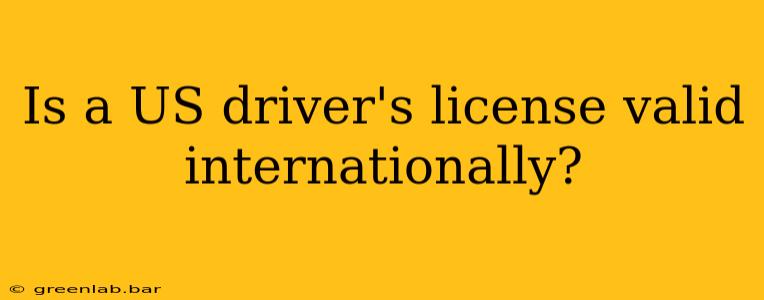Driving in a foreign country can be an exciting adventure, but understanding the local driving regulations is crucial. One of the first questions many US travelers ask is: Is a US driver's license valid internationally? The short answer is: it depends. While your US driver's license might suffice in some countries, it's rarely a universally accepted form of identification for driving purposes. Let's delve into the complexities.
Understanding International Driving Regulations
The validity of your US driver's license abroad hinges on several factors, primarily the specific country you're visiting and its bilateral agreements (or lack thereof) with the United States. Some countries have reciprocal agreements recognizing US licenses, while others require an International Driving Permit (IDP) or a local driving license.
Countries that May Accept Your US Driver's License
Several countries might accept a US driver's license for short-term stays, often with limitations on duration and specific requirements. These often include:
- Countries with strong ties to the US: Many countries with close relationships with the US might accept a valid US license for a limited period. However, confirming this with the respective embassy or consulate is always advisable.
- Countries with lenient driving regulations: Some countries might have less stringent regulations, making it easier to drive with a foreign license for a limited time. Again, this should be verified independently.
Important Note: Even in countries where your US license might be accepted, it's always best to check with the local authorities or embassy before you travel. Regulations can change, and relying solely on assumptions could lead to fines, legal issues, or even vehicle confiscation.
The Importance of an International Driving Permit (IDP)
An International Driving Permit (IDP) is a translation of your existing driver's license. It's not a replacement for your US driver's license, but rather a supplementary document that makes your license understandable to authorities in countries where English isn't the primary language. While an IDP doesn't grant you automatic driving rights, it significantly simplifies interactions with local law enforcement and rental car agencies.
Obtaining an IDP: You can obtain an IDP from the American Automobile Association (AAA) or other authorized organizations. You'll need your valid US driver's license and a passport-style photograph.
When an IDP is Essential
An IDP is highly recommended, and often mandatory, when driving in:
- Countries with strict driving regulations: Many European countries, for example, have strict rules and require an IDP alongside your US driver's license.
- Countries where English isn't widely spoken: An IDP ensures your license information is readily understood, preventing potential misunderstandings.
- For rental car agencies: Most international rental agencies strongly prefer, or even require, an IDP for insurance and liability purposes.
Alternatives: Obtaining a Local Driver's License
For extended stays or frequent driving abroad, obtaining a local driver's license might be necessary. The process varies significantly by country and often involves a driving test and other administrative steps.
Conclusion: Prioritize Safety and Compliance
Ultimately, your US driver's license alone is unlikely to guarantee you the right to drive in every country. Always research the specific regulations of your destination country well in advance of your trip. Obtaining an International Driving Permit significantly increases your chances of a smooth and legal driving experience. Prioritizing safety and compliance with local laws is crucial for a responsible and enjoyable international driving experience. Remember to check the latest travel advisories and local regulations before you go.

